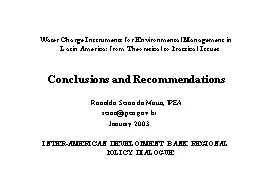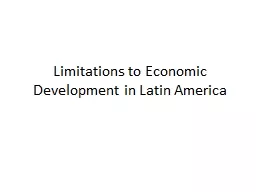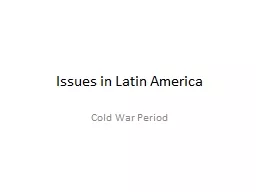PPT-Water Charge Instruments for Environmental Management in Latin America: from Theoretical
Author : blackwidownissan | Published Date : 2020-06-20
Conclusions and Recommendations Ronaldo Seroa da Motta IPEA seroaipeagovbr January 2003 INTERAMERICAN DEVELOPMENT BANK REGIONAL POLICY DIALOGUE Conclusions Policy
Presentation Embed Code
Download Presentation
Download Presentation The PPT/PDF document "Water Charge Instruments for Environment..." is the property of its rightful owner. Permission is granted to download and print the materials on this website for personal, non-commercial use only, and to display it on your personal computer provided you do not modify the materials and that you retain all copyright notices contained in the materials. By downloading content from our website, you accept the terms of this agreement.
Water Charge Instruments for Environmental Management in Latin America: from Theoretical: Transcript
Download Rules Of Document
"Water Charge Instruments for Environmental Management in Latin America: from Theoretical"The content belongs to its owner. You may download and print it for personal use, without modification, and keep all copyright notices. By downloading, you agree to these terms.
Related Documents














